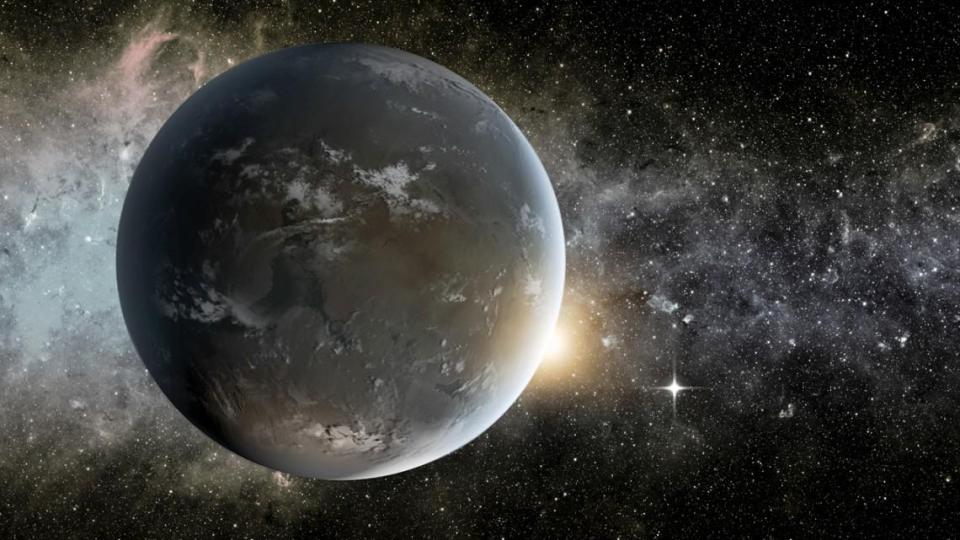
This artistic depiction shows exoplanet Kepler-62f, a rocky super-Earth size planet, located about 1,200 light-years from Earth in the constellation Lyra. Kepler-62f may be what a prebiotic Earth may have looked like. Other exoplanets may look similar. CREDIT: NASA Ames/JPL-Caltech
In this modern world, we all find ourselves periodically wondering, “Is there a world out there I can escape to,” or “Can I shoot this other person off into space”. While you may not care if that space is all that habitable in the second case, finding a place capable of supporting life may matter more if it is yourself you’d like to take somewhere else.
The good folks at Cornell have your back. A team led by Lisa Kaltennegger has looked at the geologic and biologic history of our own mostly habitable planet and defined five key points in our world’s evolution. Using advanced computer models, they’ve defined how our world would look to distant observers during each of the periods in time. Specifically, they’ve defined our planet’s changing chemical barcode – that rainbow of light with superimposed dark lines that mark out the colors different elements absorb as sunlight passes through our Earth’s atmosphere. These kinds of spectral signatures won’t be unique to our Earth, this paper doesn’t just explain how our world might look to aliens: It also explains how alien worlds could look to us.
In their paper, this research team looks at how our earth would look currently as well as 3.9, 3.5, 1-2, and 0.5-0.8 Billion years ago. These specific periods correspond to our earth in its prebiotic days, when the atmosphere was dominated with CO2; to that Archean period when continents had just finished forming and life was just starting; to the Paleo- or Meso-proterozoic period when oxygen began to rise in our atmosphere thanks to life, and finally to the time when multi-cellular life began to dominant our world in the Neo-proterozoic period. While the model for today reflects the impacts of intelligence and the pollution that comes with industry, the early epochs show distinct changes that come from the presence of different kinds of life.
But taking into consideration the changes in planetary temperature, chemistry, and the biosignatures of life, they have provided observers with detailed charts of what we may someday see when we look at the atmosphere’s of distant worlds.
One of the great sadnesses of this paper is that the JWST will have the capacity to measure the atmospheres’ of planets outside our solar system. If it had launched in 2011 as planned, they could be going through its archive to say “This world matches the age of the dinosaurs, and this one may have its first single celled critters.” But… At this stage I have no idea when it will launch, and I don’t think anyone has any idea when it will launch, so for now… this is cool research with no application.




 Join the Crew!
Join the Crew!
 Escape Velocity Space News
Escape Velocity Space News
0 Comments